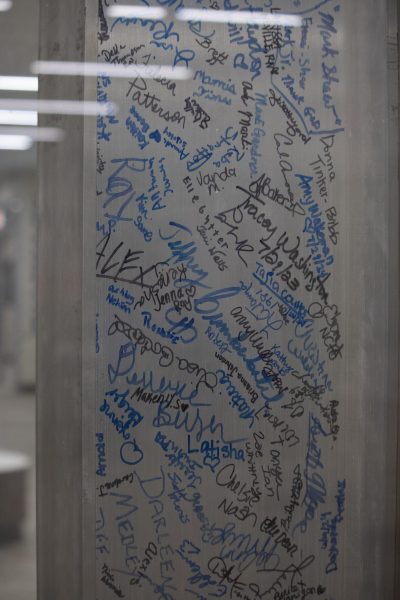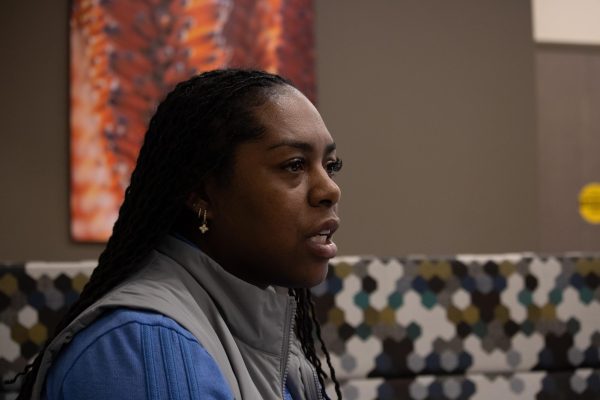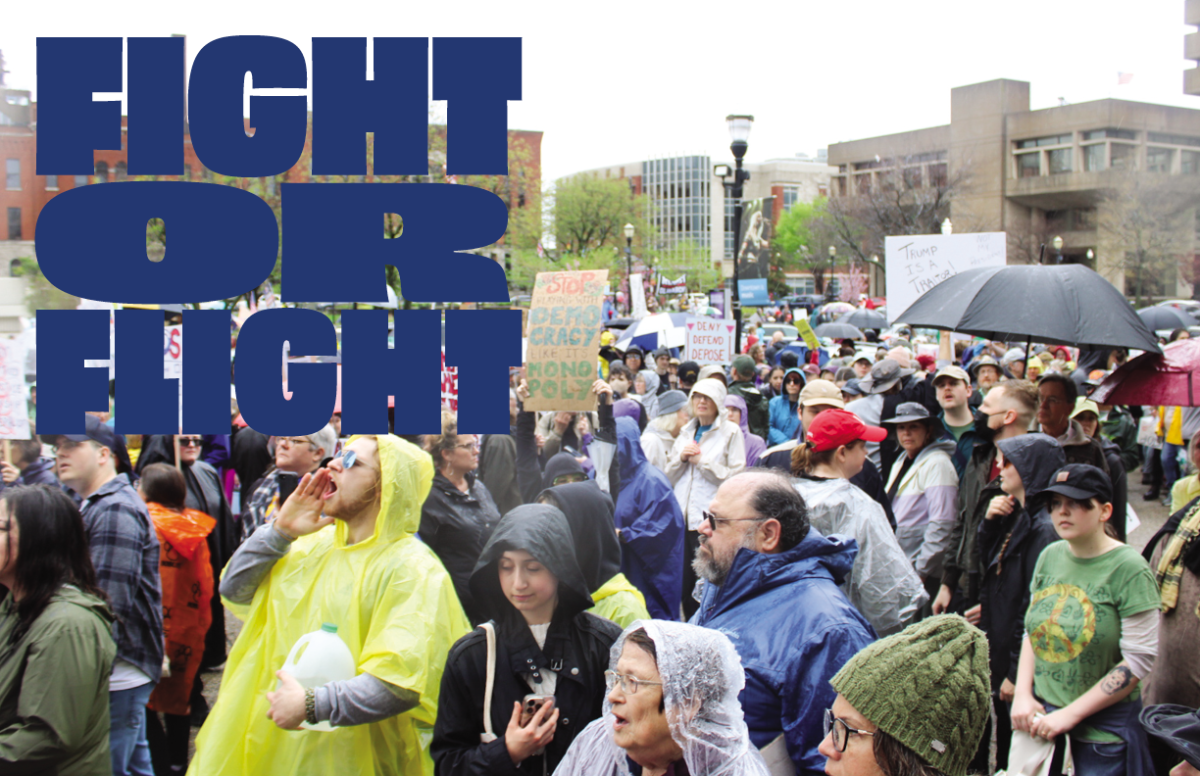When I first heard that a new hospital was opening in the West End, I had a very clear image in mind. I expected it to look like how I pictured a typical hospital would: blank walls, sterile rooms and gray chairs lining the hallways. Instead, what I saw when I first walked in on Feb. 21 was anything but that.
Bright, colorful paintings lined the walls, each telling a story of its own. Typical furniture had been replaced by benches spotted with a variety of geometric shapes and patterns. One of the most distinctive aspects of this establishment was the constant exposure to sunlight: every room featured tall windows — one of many attempts at helping patients feel less confined.
As I took in the building’s vibrant, unexpected design, it was clear that the hospital was created for more than functionality; there was concern for the community’s needs as well.
On Nov. 11, 2024, the Norton West Louisville Hospital opened its doors to patients, making it the first built west of Ninth Street in more than 150 years.
So why now?
In order to understand this inequity, I decided to look into the original lack of medical care in the West End.
Gabe Jones, a professor at the University of Louisville School of Public Health and Information Sciences, explained this disparity.
“Often, hospitals are looking at different areas and saying, ‘well, that’s a low-income area and low-income areas are unsafe,’ or ‘low-income areas are this or that’ or whatever narratives they create,” Jones said. “And they use that for reasons not to locate there.”
Corenza Townsend, the hospital’s chief administrative officer, had a vision for a new hospital that contradicted this notion years ago at a “unity jam.” At these events, employees could come together to discuss ideas that would benefit certain groups of people. As a plan for the hospital evolved, Townsend and the Norton team realized that community involvement and pride were necessary for the hospital to be successful.

Townsend worked to accomplish this through community surveys. Responses ranged from altered safety measures to an increased emphasis on comfort, which resulted in its plans to make the hospital more open and build community trust in the process.
“I think people just expected, because it’s in West Louisville, that it wouldn’t have the same ‘Norton Healthcare’ feel or it wouldn’t be as customer service-centric as it is. When you walk in here, it doesn’t necessarily feel like a hospital,” Townsend said. “That was something that was important to us. You needed to feel comfortable coming in here.”
However, a big concern among community members wasn’t related to comfort, but rather their ability to visit a hospital in the first place.
In the surveys conducted by Norton, 33% of the respondents who lived in West Louisville reported that they are unable to access the healthcare services they need. When asked about what barriers they face, there were a variety of answers. For example, 19.5% of respondents answered that they are often unable to find a provider accepting their insurance, and 16.5% simply lacked knowledge of where to go.
Inadequate access to medical care is a primary reason why West End citizens have significantly shorter lifespans. According to the 2023 Louisville Health Equity Report, people residing in the West End live an average of 10 to 15 years less than other Jefferson County residents.
Transportation struggles worsen this issue due to a lack of access to medical care.
“When you have a city like Louisville that is not a very walkable city that does not have a particularly notable public transit transportation system, geographic access becomes really important,” Jones said.
With busing and other independent transportation services only available to those who can pay the fares, Norton’s central location allows for increased access to necessary resources.
“Technically, there’s a hospital that’s about four miles away from here, but for people in West Louisville, there’s somewhat of a gap in care,” Townsend said. “Considering transportation and access to care, when somebody is truly, truly sick, it could be the difference between life and death.”
However, health disparities aren’t solely based on the frequency or size of medical facilities. They also occur when it comes to both the historic and current quality of care.
“Particularly for Black communities, there’s a lot of distrust of medical systems because, quite frankly, medical systems have not been very kind to Black communities.” Lyndon Pryor, president and CEO of the Louisville Urban League, said. “Doctors, hospitals, the whole nine have a long and deep and painful history of traumatizing Black people.”
This process, known as medical malpractice, is defined as negligence by a provider that causes substandard treatment or injury. On a national scale, malpractice based on race dates back centuries.
“What you will hear many people say is that, ‘oh, well, Black folks don’t go to the doctor enough. That’s why they’re not getting diagnosed,’” Jones said. “But what is often excluded from that conversation are things that are foundational to medicine in this country.”
During the mid-1800s, James Marion Sims, a white doctor, became widely known as the father of gynecology. In pioneering new surgeries, he conducted research on enslaved Black women. However, all of these “experiments” were conducted without anesthesia under the false premise that Black people do not feel pain.
Another example of malpractice is the Tuskegee syphilis study. In this case, the government offered free healthcare, insurance and meals to more than 600 Black men with syphilis in Alabama. In reality, sufficient treatment was withheld so that the government could “monitor the progression of the disease.” The study continued even after a cure was discovered in the 1940s and only ended in 1972 after a panel investigated and found it “ethically unjustified.”

“These are just two examples of a long history of damage that has occurred,” Jones said. “What we do now, in many cases, is we blame that distrust on the very people who were damaged by those practices.”
Criticizing the victims may cause opinions to form on who is or isn’t worthy of care. In addition, because West End citizens have been falsely promised resources before, many were worried that the creation of the hospital was not a genuine action.
“There are going to be people who see a hospital coming into a community that has been neglected for so long, and they’re going to say, ‘can I trust this? Is this real?’” Pryor said. “Particularly in a city like Louisville, where, quite frankly, organizations have made promises about doing things for Black people for a very long time, and those promises have not always been kept.”
Given these communities have long been underserved, this distrust is warranted.
“History tells us that marginalized people, immigrants and people of color have not necessarily been treated equally when it comes to healthcare and having healthcare rights,” Townsend said. “This is a place where you can come and you don’t have to worry about that.”
Norton looked to the community in order to accomplish this. Through their surveys, they ensured that people were able to voice their hopes for the hospital.
While the main request was safety features at 65.2%, answers also included more unique qualities. Because 43.5% of respondents requested natural lighting indoors, Norton replaced typical sterile white walls with windows in every patient room. They also constructed several patios in order to provide more access to the outdoors.
Even though these features stood out to me as unusual at first, they made perfect sense once Townsend explained the reasoning behind them. Norton’s efforts to build community trust and interdependence aim to distance themselves from historical patterns of community neglect.
“They have been really intentional about building a space that is going to be specific to the community that is most likely to use it,” Pryor said.
The hospital has more benefits than just medical aid: as more professionals are drawn into the area, the economy benefits as well.
“The West End, unfortunately, has been divested in and kind of ignored financially and economically in this city for a very long time,” Pryor said. “But when you have a hospital there, so you’ve got 300 professionals who are there every single day working in and out, what that means is that there’s going to be other types of development that comes, there are going to be more restaurants, there are going to be more stores.”
The hospital also helps demonstrate other benefits of investing in the West End.
“What that hospital symbolically represents is a substantial need, because I think the synergistic effect of them being there will hopefully bring more resources to the West End,” Jones said. “If someone or an institution the size of Norton has demonstrated that, ‘hey, we are willing to do this,’ then I’m hopeful that other institutions who have maybe or maybe not been complicit in the deprivation of the West End will start to do what’s right as well.”
Going forward, Townsend hopes to maintain and even grow the hospital’s current success by decreasing disparity rates between the West End and other areas in Jefferson County.
“It’s new and shiny now, and I think people expect for it to kind of dim down once the lights and cameras are gone, but a lot of the lights and cameras are gone already, and we’re still doing good,” Townsend said. “We can have this conversation a year from now, and I want the same experience, the same feel when you come in here.”
As more establishments like the hospital are founded in the West End, greater investment in the overall area becomes more plausible. However, it takes a community effort to decrease the inequities there.
“I hope that people who read this understand that whether they live in the West End or not, or whether they live in Louisville or not, when injustice and inequity is allowed to harm anyone in our community, it also harms us,” Jones said. “We have to get to a place where we understand that our humanity and our liberation is interconnected.”












